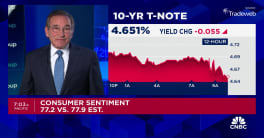Analysts were expecting existing home sales to rebound in May after they fell behind year-ago levels in April. However, the National Association of Realtors® (NAR) reported a second straight monthly loss, with the Northeast the only region where sales improved.
Sales of existing single-family homes, townhomes, condos, and cooperative apartments were at a seasonally adjusted annual rate of 5.43 million in May, a 0.4 percent decrease from April and down 3.0 percent from May 2017. It was the third straight year-over-year decline. April sales were also downgraded from 5.46 million to 5.45 million.
The May results came in below the lowest of analysts' expectations as reported to Econoday. Those predictions ranged from 5.44 million to 5.65 million with a consensus of 5.50 million.
Single-family home sales declined 0.6 percent to a seasonally adjusted annual rate of 4.81 million from 4.84 million in April and are also 3.0 percent lower than the 4.96 million sales pace a year ago. Existing condominium and co-op sales increased 1.6 percent to a seasonally adjusted annual rate of 620,000 units but remain down year-over-year by 3.1 percent.
Lawrence Yun, NAR chief economist, says a solid economy and job market should be generating a much stronger sales pace than what has been seen so far this year. "Closings were down in a majority of the country last month and declined on an annual basis in each major region," he said. "Incredibly low supply continues to be the primary impediment to more sales, but there's no question the combination of higher prices and mortgage rates are pinching the budgets of prospective buyers, and ultimately keeping some from reaching the market."
The median existing-home price for all housing types sold during the month was $264,800, an all-time high and a 4.9 percent increase from the May 2017 median of $252,500. It was the 75th straight month of year-over-year gains. The median existing single-family home price was $267,500, up by 5.2 percent on an annual basis. Condo prices increased 2.5 percent to a median of $244,100.
While inventories are still lower than a year ago, the number of available units did increase for the second month in a row, climbing 2.8 percent from April to 1.85 million. That is still 6.1 percent below the number of available units a year earlier, 1.97 million. Inventories have shrunk year-over-year for 36 consecutive months. The unsold inventory is estimated at a 4.1-month supply. NAR has historically called a 6-month supply a balanced market.
Properties typically stayed on the market for 26 days in May, unchanged from April and down from 27 days a year ago. Fifty-eight percent of homes sold in May were on the market for less than a month.
"Inventory coming onto the market during this year's spring buying season - as evidenced again by last month's weak reading - was not even close to being enough to satisfy demand," added Yun. "That is why home prices keep outpacing incomes and listings are going under contract in less than a month - and much faster - in many parts of the country."
"The abrupt hike in mortgage rates this spring, along with price appreciation and competition being the strongest in the entry-level part of the market, is why first-time buyers are not as active as they should be and their participation remains below its historical average," said Yun.
First-time buyers accounted for 31 percent of sales in May, which is down from 33 percent both last month and a year ago. Individual investors were involved in 15 percent of transactions and 21 percent of transactions were all-cash sales. Sales of distressed homes made up only 3 percent of transactions.
"Realtors® in many parts of the country say their seller clients are dealing with a seesaw of emotions when deciding to put their home on the market," NAR President Elizabeth Mendenhall said. "While they're thrilled that they will immediately find multiple buyers interested in their listing, many fear they'll have extreme difficulty finding another home to buy. Some have even decided to hold off until inventory conditions start improving, which is actually only exacerbating supply shortages."
The Northeast saw the only strong market in May. Existing-home sales there were up 4.6 percent from April's level to an annual rate of 680,000 units but remain 11.7 percent below a year ago. The median price in the Northeast was $275,900, a decline of 1.8 percent from the previous May.
In the Midwest, existing-home sales declined 2.3 percent to an annual rate of 1.26 million. This is a 2.3 percent annual decline. The median price was $209,900, up 4.2 percent from a year ago.
Sales in the South inched down 0.4 percent to a 2.32 million annual rate, unchanged from a year ago. The median price gained 4.5 percent to $233,100.
The West saw sales decrease 0.8 percent to an annual rate of 1.17 million in May. That number is down 4.1 percent from last May. The median price in the West was $395,800, up 7.2 percent year-over-year.







